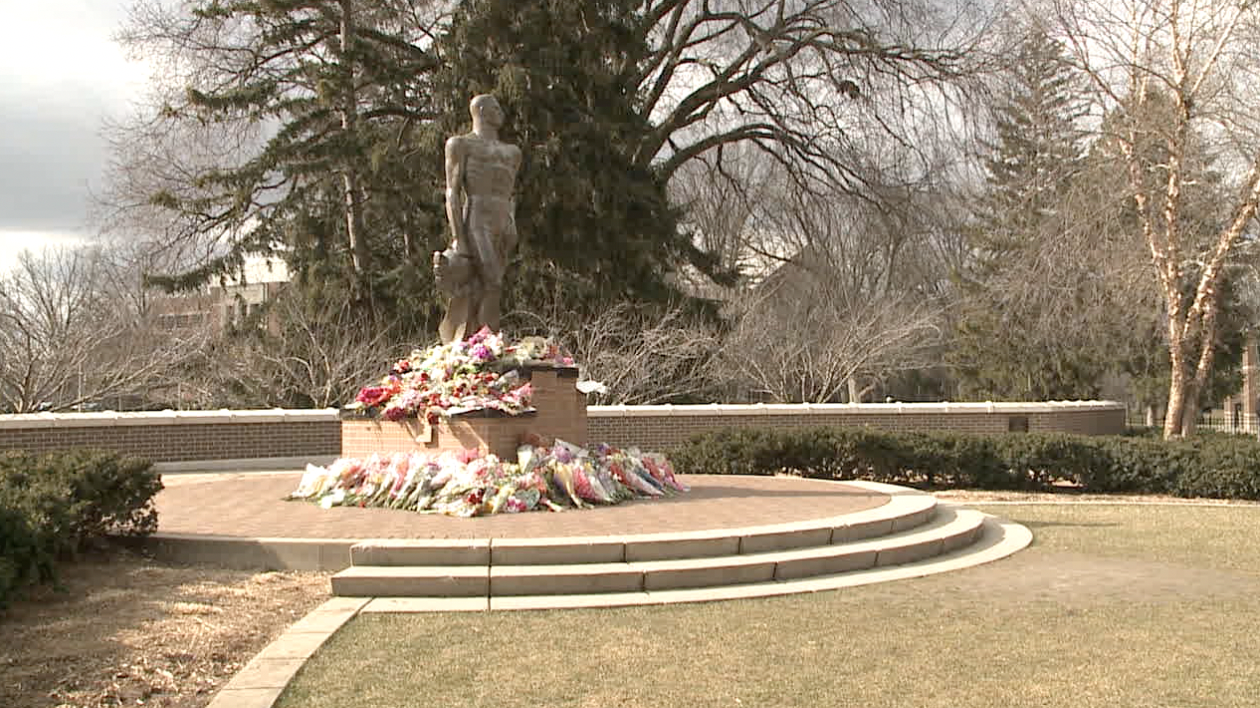EAST LANSING, Mich. — One year ago, February 13, 2023, marks the darkest of days in East Lansing, on the campus of Michigan State University.
Three were killed. Five were hurt.
Arielle Anderson, Brian Fraser and Alexandria Verner lost their lives that day.
A permanent reminder of February 13, a day burned into the memories of Spartans everywhere, sits near where much of one man's deadly tirade took place.

There's now a walkway between Olin Health Center and Berkey Hall. Before graduation this year, the student government at MSU plans to place a memorial bench in the area.

But it's those less permanent reminders that once covered campus, that MSU is making sure not to forget, too.

“The MSU Museum is serving as the central repository for the materials that were left at the memorials following February 13, 2023,” Devon Akmon, MSU Museum Director said.
It's a responsibility that the museum takes seriously, says the museum director Devon Akmon.
“Over a thousand posters, individual letters. Stuffed animals, and other types of ways in which people expressed their emotions after the events last year here on campus,” Akmon said.
Going through the materials hits the museum staff hard. They've only just started processing the memorial items.
“For about a year, we allowed ourselves some time for that material to kind of stabilize, and to give ourselves some grace in handling it,” Akmon said.
Akmon says the material needed to be stabilized, as much of it was left outside during a Michigan February. His first concern is for his staff, who is handling the material.
It's such a sensitive process, and so full of emotions — FOX 17 cameras weren't allowed to capture the process as portions of the memorial are being cataloged and digitized.
But we do remember what the campus once looked like.

“Handling this material is extremely difficult. Again, we are impacted by the events that took place, and the ongoing act of processing that. So, I do have a deep concern for my collections staff in particular that is processing this material,” Akmon said.
Pieces of history were preserved at one university institution and another: the Michigan State University Herbarium.
“This is a rose, this is a tulip, and this is alstroemeria” Alan Prather, Director of the MSU Herbarium, explained.
The pressed flowers are not part of what the MSU Herbarium normally preserves in its collection. They have good reason to make an exception.
“These particular plants came from the memorials that happened spontaneously, following the shootings on campus," Prather said.

One flower is from the Rock, one is from the MSU Union building, and another is from the Sparty statue.
The preservation effort was all a student's idea.
“One of our students was on campus a few days after the shooting just as people were leaving these monuments, and he was in one of the parking ramps on campus, and found like a single flower laying on the floor, like somebody had probably dropped it on their way to leaving some of these flowers at a monument,” Prather explained.
“He picked it up, and in the process of that, I think he thought of ways to maybe take that flower, and sort of commemorate the memorial in a different way," Prather said.
The flowers, pressed and saved, are now a permanent part of the Herbarium's collection — an institution that's been around since 1863.
“We felt like it was such an important moment, that it would be great to be able to document this, in some way, for posterity,” Prather said.
The hope is that these items will serve as some sort of permanent record of the acts of kindness that came as a result of one of the darkest days MSU's campus has ever seen.




